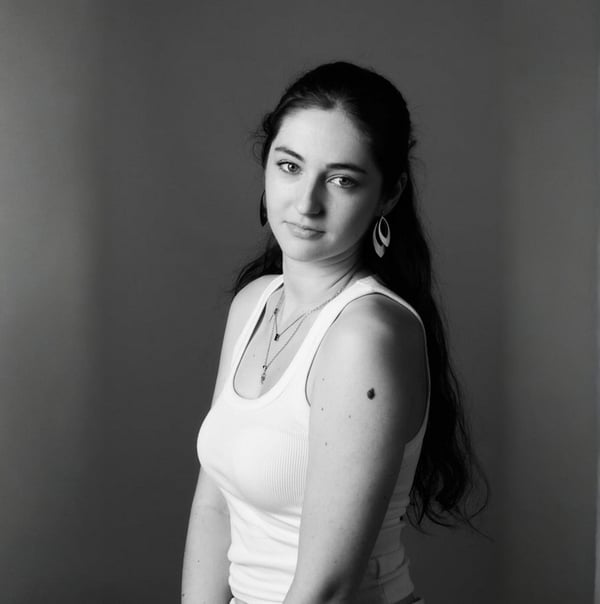AI Photo Restoration: Revive Old Photos with Cutting-Edge Artificial Intelligence Technology
Table of Contents
- How AI Photo Restoration Works
- Brands Reimagining Visual Campaigns
- Tools That Make It Happen
- The Benefits of AI vs. Traditional Restoration Methods
- Community-Driven Innovation and Testing
- Tips for Restoring Photos with AI
- The Future of Photo Restoration: What Lies Ahead?
- The Ultimate User Guide to Virtual Try-On Features: How to Get the Best Experience
- One Last Frame: The Power of Bringing Images Back to Life
AI photo restoration is no longer a futuristic promise it’s a fast, accessible and remarkably effective reality. Instead of relying on manual editing, expensive software, or specialized photo retouchers, much of the restoration process can now be automated using deep learning algorithms that rebuild missing details, fix damage, and restore color with impressive accuracy.
At Modelia, we’ve made significant investments in this space. For us, AI photo restoration isn’t just about fixing pixels, it’s about bringing memories back to life. Let’s dive into how AI is reshaping the way we preserve and enhance visual history.
How AI Photo Restoration Works
The foundation of AI photo restoration is the training of models on millions of damaged images and their restored versions. From this training, the models learn to predict what a damaged photo should look like.
In practice, the pipeline usually follows these steps:
Damage detection: scratches, stains, tears, and texture loss are automatically identified.
Reconstruction of missing parts: neural networks like GANs (Generative Adversarial Networks) generate new content that fits the rest of the image.
Colorization: originally black and white photos gain realistic colors based on historical context or inferred data.
Fine adjustments: contrast, sharpness and color balance are refined using perceptual quality optimization methods.
The result? A professionally restored image in just seconds.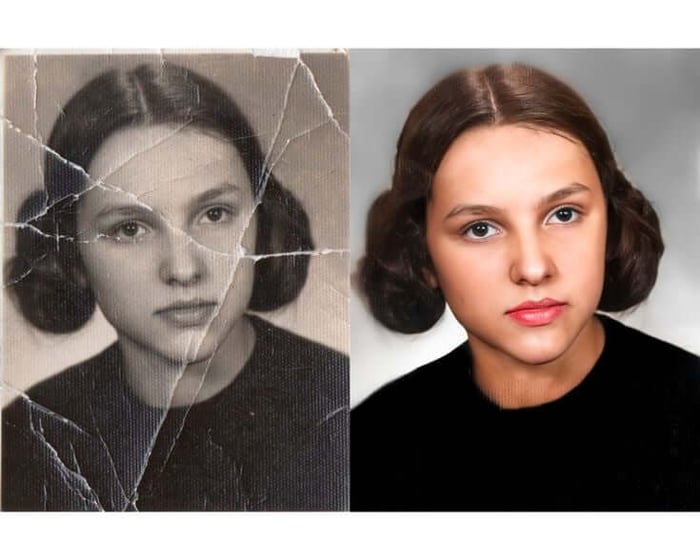
Brands Reimagining Visual Campaigns
Companies looking to revive their history have found value in restoring old images for institutional campaigns. A compelling example is Mango’s 2024 campaign for its youth line, Mango Teen. The brand used AI generated visuals for the “Sunset Dream” collection, blending real photos of garments with generative AI models trained to position and style each piece accurately. Once generated, these images were further refined by the brand’s in-house photo team to match editorial standards. This hybrid approach allowed Mango to drastically reduce production time while exploring fresh creative directions that resonate with younger audiences. It also shows how AI photo restoration and generation are merging in real-world fashion storytelling.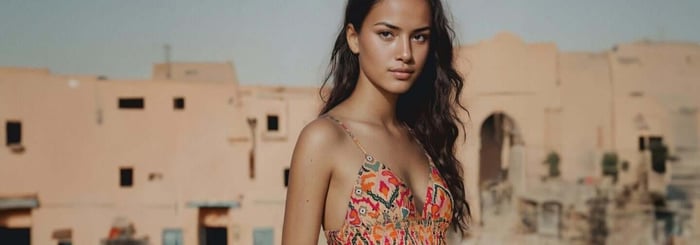
Tools That Make It Happen
At Modelia, we operate with a modular tool ecosystem. Some are specifically built for restoration:
Modelia Restore: our core automatic restoration tool. It analyzes, cleans, and reconstructs photos with minimal input.
Colorize AI: brings black-and-white photos to life with customizable historical color palettes.
Denoise+: removes noise and enhances sharpness while preserving the natural look of the image.
Faces First: automatically optimizes facial expressions in damaged portraits, especially useful for low resolution images.
All of these tools are available via dashboard or API/SDK integration.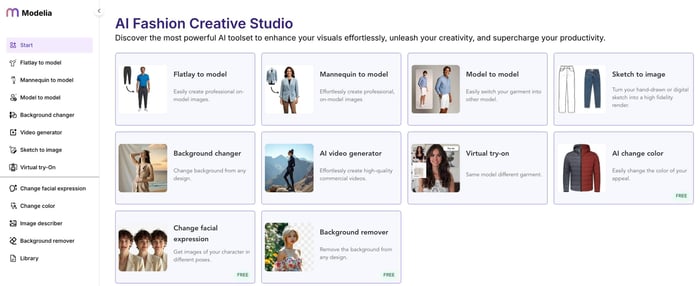
The Benefits of AI vs. Traditional Restoration Methods
Traditional photo restoration methods require deep technical knowledge, professional software and many hours of meticulous work. Every detail is retouched manually, making the process expensive and time consuming. There's also a lack of consistency, especially when multiple professionals are involved.
With artificial intelligence, this scenario is completely transformed. AI automates much of the work, delivering faster and more accessible results. What used to take hours can now be done in seconds. AI also enables scalability: whether restoring one photo or a thousand, the computational time remains nearly the same. Another key advantage is consistency, algorithms maintain predictable quality standards, which is crucial for institutional and corporate applications.
Cost is another major benefit. AI significantly reduces the need for specialized labor on repetitive tasks. This makes the technology not only accessible to large organizations but also to everyday users looking to restore family albums or revive personal memories. Ultimately, it’s a democratic solution that brings cutting-edge innovation into real life.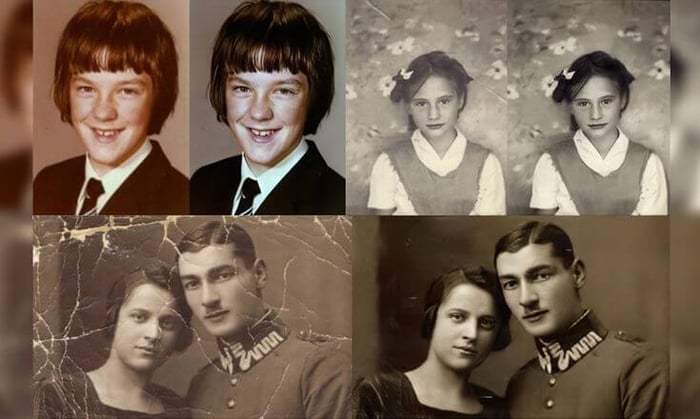
Community-Driven Innovation and Testing
Another powerful use of Modelia's AI tools comes from our community of early adopters and digital creatives. Many of them use our restoration stack not just to preserve personal history, but to experiment with storytelling formats, combining restored photos with AI-generated narratives, creating before and after exhibitions, or training new employees with revitalized institutional materials. These projects have helped Modelia refine the technology in real world conditions, leading to faster models, better facial accuracy, and improved color fidelity. Our development roadmap is shaped by these feedback loops, ensuring that the tools evolve in sync with how people actually use them.
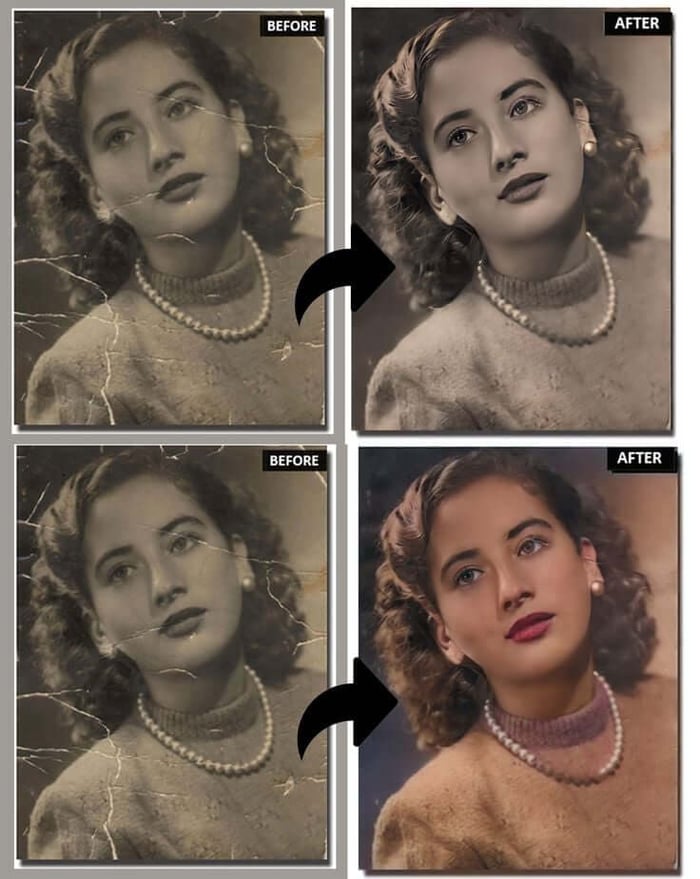
Tips for Restoring Photos with AI
Before using AI tools, it helps to follow some best practices:
Scan with quality:
Use high-resolution scanners or cameras
Avoid glare or shadows on the image
Choose the right tool:
For general restoration, go with Modelia Restore
For colorizing black-and-white images, try Colorize AI
For facial repair, combine Faces First with Denoise+
Review the output:
Not every photo needs 100% reconstruction
Preserve the historical feel when appropriate
The Future of Photo Restoration: What Lies Ahead?
The advancement of AI is accelerating the development of even more sophisticated visual restoration tools. In the near future, we expect to see technologies that go beyond static photos. AI video restoration, for example, is already in testing, aiming to transform home videos or institutional footage into high-quality digital archives. This includes frame reconstruction, precise colorization, and automatic stabilization.
Another exciting direction is customization. Users will be able to choose restoration styles based on personal aesthetic preferences or historical context. This includes adjusting color palettes, sharpness, and even the overall "mood" of the image (more vintage, more vibrant, more neutral).
Adaptive models are also on the horizon. These systems learn from user behavior to deliver increasingly personalized and accurate results with each image. At Modelia, we are already testing these features in a closed beta, validating their use in real world scenarios.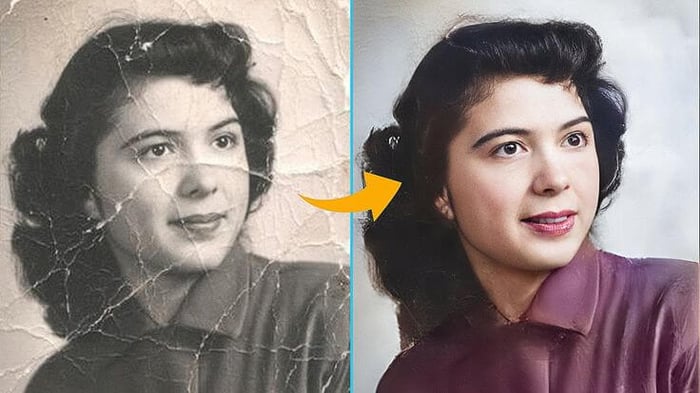
The Ultimate User Guide to Virtual Try-On Features: How to Get the Best Experience
Buying clothes, shoes, or accessories online often comes with a big question: “But how will this look on me?” Virtual Try-On (VTO) technology solves that exact problem. Powered by AI and AR (augmented reality), VTO lets customers see how a product will look on their own body, face, or environment before clicking add to cart.
Here’s how it elevates the entire online shopping experience:
1. Confidence in Purchase Decisions
One of the main reasons people hesitate to buy fashion online is uncertainty. Will the dress fit my body type? Does this lipstick match my skin tone? With VTO, shoppers can see themselves wearing the product in real-time, which eliminates guesswork and reduces returns.
2. Personalized Shopping at Scale
AI-driven try-ons adapt to each shopper’s unique body shape, size, and style preferences. Instead of generic model images, customers get a tailored preview of how a garment, pair of sneakers, or sunglasses will look on them personally. This kind of personalization makes the experience more engaging and memorable.
3. Reduced Return Rates
Returns are one of the biggest pain points in eCommerce, especially in fashion, where size and fit issues dominate. Virtual try-ons drastically cut down on “trial and error” shopping. When customers can visually confirm their choice, they’re less likely to send it back, saving businesses huge costs.
4. Exploration of Multiple Styles Effortlessly
Shoppers can instantly swap colors, styles, or patterns with a single click. Want to see if that dress looks better in navy blue or pastel pink? Instead of guessing, they can test both variations virtually. Combined with AI recoloring tools like those offered by Modelia, retailers can expand their catalogs without endless photoshoots.
5. Bridging Online and Offline Shopping
VTO narrows the gap between the physical store and the digital one. Customers enjoy the convenience of online shopping, paired with the tangibility of trying items before purchasing. This hybrid experience drives trust and encourages more confident buying behavior.
6. A More Engaging, Fun Experience
Let’s be honest—virtual try-ons aren’t just practical, they’re fun. Customers love experimenting with different styles, colors, and trends, and brands that offer this interactive element stand out in the crowded eCommerce space.
One Last Frame: The Power of Bringing Images Back to Life
AI photo restoration is more than a practical solution, it’s a bridge between past and present. Modelia’s technologies have empowered individuals, families, companies, and institutions to reclaim their visual history at a level of quality and scale that was once impossible.
The next time you find an old photo tucked away in a drawer, think about the potential it still holds. With the right AI, every picture can get a second chance.
Try Modelia's AI-powered tools and see the transformation in seconds
How would you rate this article:
Related Articles
- Virtual Fitting Rooms: How Technology is Revolutionizing Online Shopping and Fashion
- 10 AI Design Tools Revolutionizing Fashion and Ecommerce Design
- Top AI Photo Description Generator Tools for Online Sellers
- Top Fashion Brands to Follow on TikTok
- The Best Fashion Blogs to Follow for Daily Style Inspiration
- The Best Outdoor Clothing Brands for Every Adventure
- Top 5 AI Background Removal Tools for Effortless Photo Editing
- How to Create a Clothing Brand: Step-by-Step Guide
- Top AI Tools Every Ecommerce Store Should Use
- How to Stay Stylish on a Budget: Fashion Shopping Tips for the Savvy Shopper
